FIBC Bags Series
VidePak is offering a type of PP Fabric Bags with ton-grade capacity, which is called FIBC Bags.
What is FIBC Bags?
FIBC Bags, also called Jumbo Bags & Ton Bags & Bulk Bags, are designed to transport bulk materials so it offers excellent strength, chemical resistance, and anti-static properties, making them ideal for heavy-duty industrial use.
They can be customized with lifting loops, discharge spouts, and liners to meet specific requirements.
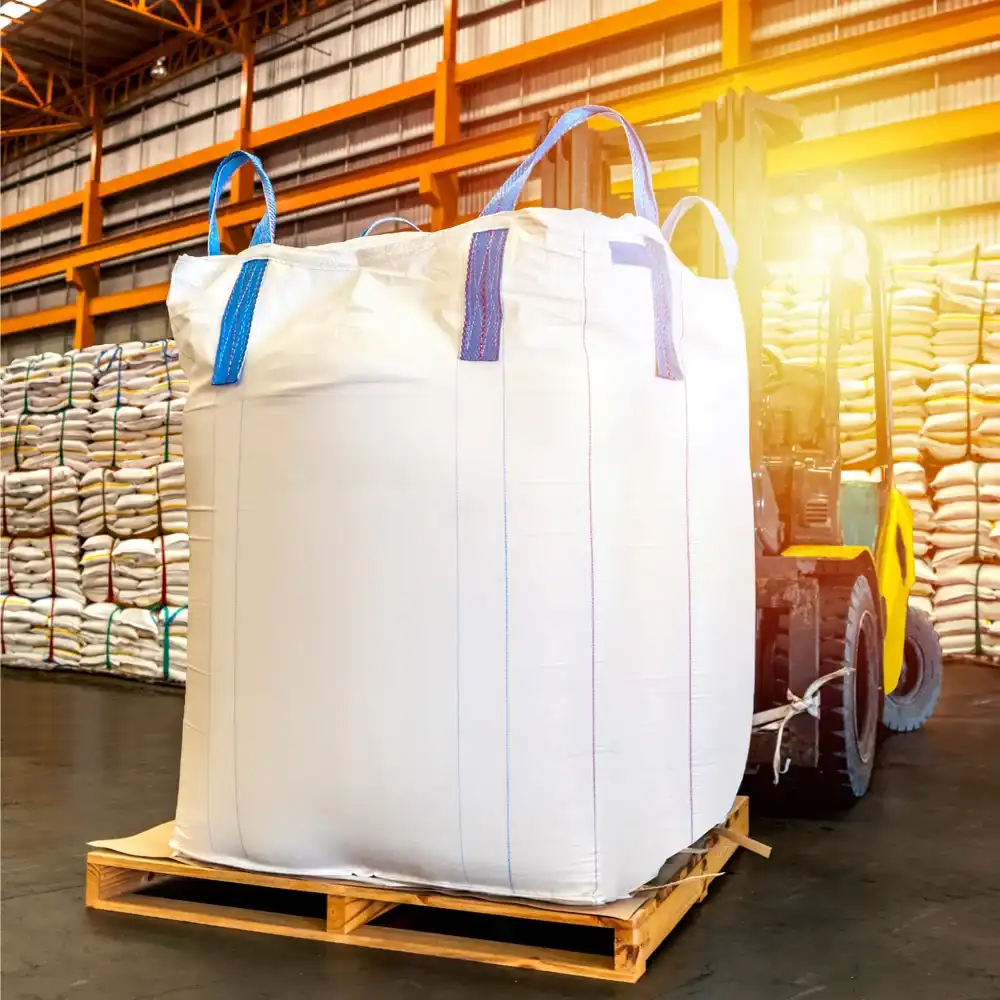
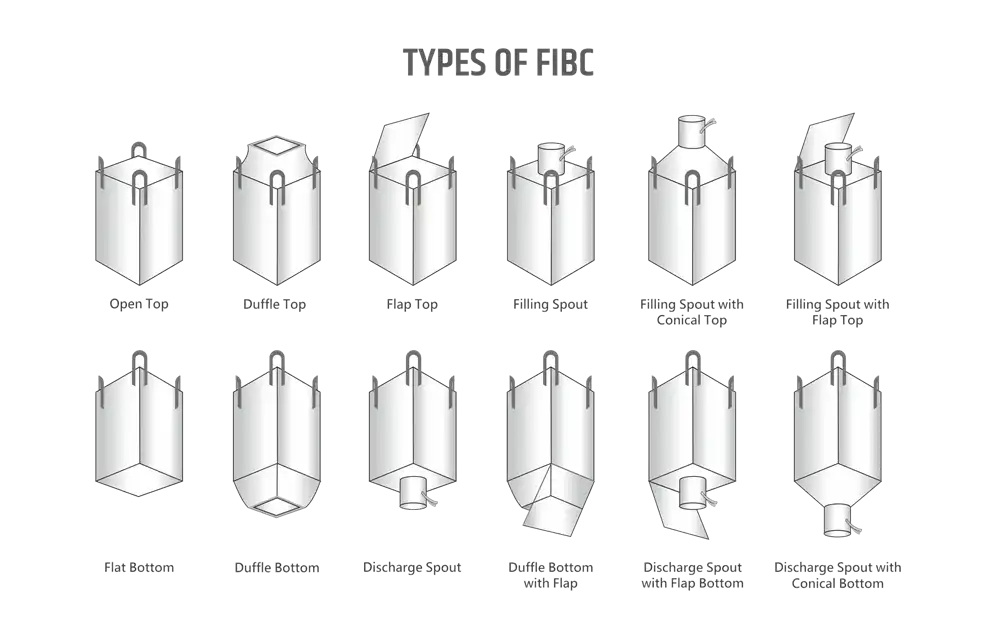
Customization of FIBC Bags
- Top Pattern: Offer various of top style, mainly open top, duffle top, flap top, Filling spout.
- Bottom Pattern: Mainly offers flat bottom, duffle bottom, discharge spout, duffle bottom .
- Construction: U-Panel, Circular, 4 Panel, Baffle
- Lifting Loops: 4 loops, tunnel lifting
Multiple Types of FIBC
FIBCs can be classified into four categories: A, B, C and D. These categories are related to the safety certification of the FIBCs. During loading and unloading of the FIBCs, the movement of stored items can cause static electricity to build up. If you handle flammable materials, or work in extreme environments, you need to use the right type of FIBC to ensure optimal safety.
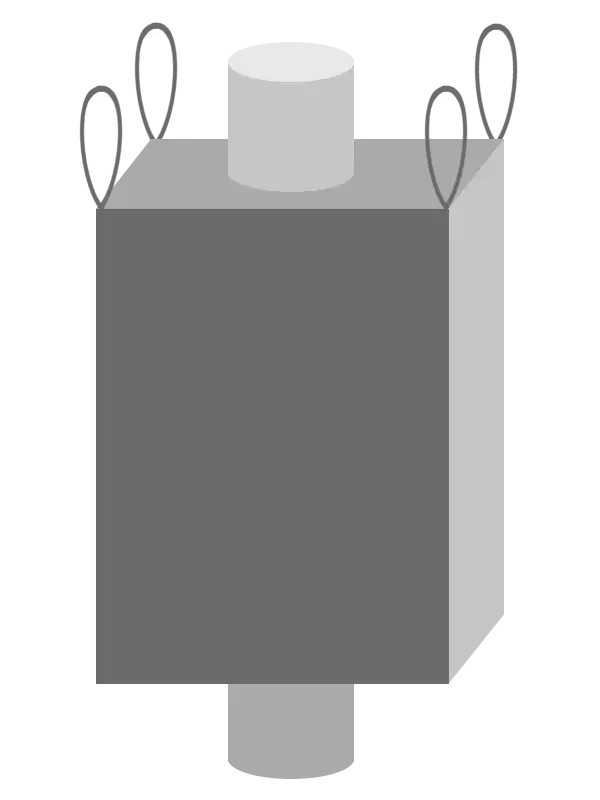
Type A Regular FIBC
Type A FIBC are made from polypropylene with non-conducive property, and offer no static protection. If you want to transport non-flammable products, Type A FIBC bag is a cost effective choice.
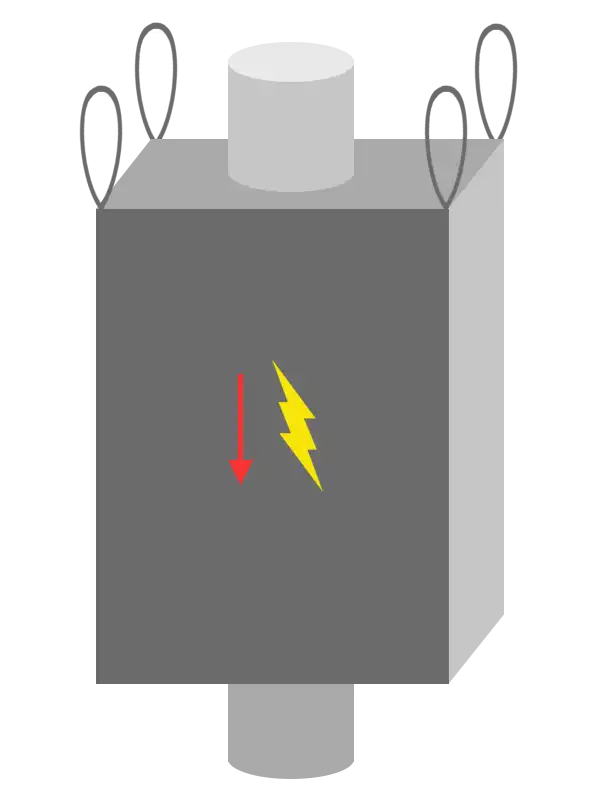
Type B Anti-static FIBC
Type B FIBC is also made from polypropylene fabric, which is non-conductive and will not dissipate static electricity. However, Type B FIBC has a lower breakdown voltage. They are ideal if you need to transport dry, flammable powders; however, they should not be used in dust environments with an ignition energy exceeding 3mJ.
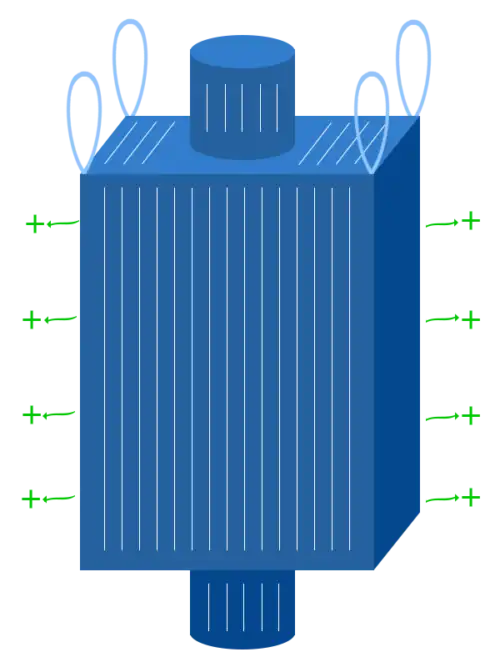
Type C Conductive FIBC
Type C FIBC, also known as Conductive Bags or ground-able Bags, are made of polypropylene and are interwoven with conductive yarns in a grid pattern. These interconnected yarns combined with the grounding connection ensure safety, making them ideal for transporting flammable powders.
Frequently Asked Question
FIBC bags, also known as bulk bags, Jumbo bags and Ton bags, are designed for efficient storage and transport of dry, free-flowing materials. These containers are extremely durable and reliable, ensuring that materials are safe and secure during transportation. Suitable for a wide range of applications, from agricultural products to industrial chemicals, FIBC bulk bags provide a cost-effective solution that reduces waste and improves logistics efficiency.
By the features of UV resistance and customizable sizes, FIBC bags can be customized to the specific needs of different industries, ensuring that materials are handled safely and efficiently. Their sturdy construction and high capacity make them key to optimizing supply chains and streamlining operations.
In addition, their easy handling, large storage capacity, and compliance with international safety standards make them the preferred choice for companies that are committed to improving operational efficiency and reducing environmental impact.
Yes, we have two options for your choice:
- Reference samples: we provide this samples from our existing stock. It could be close to your specification and not 100% same. So It helps you quickly evaluate our product quality, material, and printing before requesting a custom-made sample. Reference samples are free of charge, but DHL express cost is taken by buyer.
- Mock up custom samples: it is produced according to your specifications, including size, material, printing design, and any other customized features. These are 1:1 replicas for your bags, and it fully reflects your specifications and helps confirm all production details before mass production. It takes some charge for samples and DHL express cost.
For industrial bulk bags, we do it as below sections:
- Raw Material
We use 100% virgin material sourced through ASTM-compliant testing standards. We do sampling inspection for each batch of raw material, to verify material integrity before production. - Quality Control System
We produce and test products according to ISO9001, ASTM standard, EN standard and JIS standard. We ensure that product tolerances are within the specified range of standards, and conduct diverse testing accoridng to those standard for each batch of products, such as impact tests, tensile strength, UV weather resistance tests, etc. - Production Equipment
We're using equipments from top supplier such as Austrian Starlinger and German W&H, to ensure production efficiency, precision, process stability and better quality control. - Industrial Experience
Our core management teams have over 25 years experiene in the industrial bags. Since our factory establishment in 2008, we've cultivated quality control systems through partnerships with Fortune 500 companies including Nestle, Carrefour, Nippon Paint, AkzoNobel, Sinopec etc. In the cooperation with those excellent clients, we have accumulated a lot of experience in quality control, and we have gradually established quality specifications and standards. This is an advantage that many small manufacturers do not have.
Regarding FIBC bags, the MOQ is 1,000 pcs for per specification.
The MOQ is mainly decided by material procurement costs, production efficiency, and logistics optimization. So it can't be adjusted.
It depends on the order quantity and requirement. However, it generally refer to:
- Regarding mock up samples, lead time is 10 business days (sending by DHL or Fedex)
- Regarding standard bulk orders, lead time is generally 15-25 business days.
Why Choose Us
10 Years
Production Experience in FIBC Bags
Starlinger
Best Equipments from Satrlinger.
Production Capacity
Massive Production Capacity.
Customization
Top Pattern, Bottom Pattern, construction, lifting